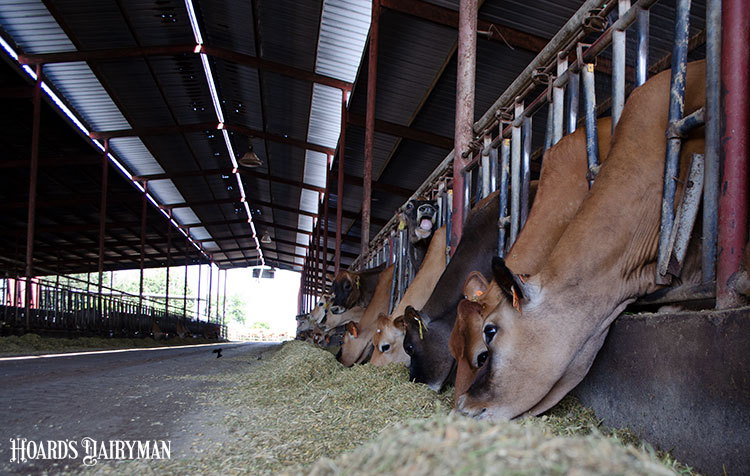
“It’s not only what cows eat, but how they eat,” described Trevor DeVries of the impact eating behavior has on an animal’s health, efficiency, and productivity. The professor of animal biosciences at the University of Guelph explained that milk and component production, as well as rumen health, is enhanced when cows consume smaller, more frequent meals that are difficult to sort and encourage rumination.
He began a recent Balchem Real Science Lecture webinar by describing a study that found higher dry matter intake (DMI) was associated with more time spent at the feedbunk and greater meal frequency. Of course, more feed can be consumed when an animal has more total feeding minutes. “For a cow to eat more, she needs to spend more time eating, eat faster, or some combination,” DeVries continued. “If we want that cow to alter her intake level, that has to be done through some change in feeding behavior.”
Eating faster, which may often be observed in herds that are overcrowded at the bunk, can have negative effects on the rumen, though. DeVries explained that large meals eaten quickly can lead to a rapid accumulation of volatile fatty acids in the rumen as that feed is digested. This drops rumen pH, impacting function in ways such as reducing fiber digestibility.
Spending more time eating can achieve greater DMI without negatively influencing the rumen; in fact, rumen health can be enhanced with more frequent meals. In one study DeVries worked with, cows that ate more meals throughout the day had a higher milkfat percentage, which can be an indication of better biohydrogenation occurring in the rumen. That would be due to the steadier intake of feed, he said.
Higher milkfat percentage was also observed in cows that sorted their ration less, DeVries noted. Further, milk protein followed the same pattern because when cows are not actually eating the diet that was balanced for them, they aren’t getting the entire amino acid mix available.
DeVries continued, “The other part of feeding behavior we need to consider is post-ingestion, or rumination.” Regular rumination also contributes to both greater component production and rumen health, and cows ruminate more when DMI is higher. These effects are true when cows achieve most of their rumination while lying down, so DeVries reminded of the importance of providing resting space and time for cows.
Watch your forage
How do we formulate a ration that encourages small, frequent meals that are hard to sort and encourage rumination? “I’m going to summarize this by saying it comes back to good forage management,” DeVries said.
The factors he outlined were quality (offering digestible feed), quantity (higher forage diets will take longer for cows to eat), type (dry or ensiled), and particle size. “While cows need effective particle size to stimulate the rumen, we don’t need excessively long particles,” he cautioned.
Along with proper feedbunk and barn management that allow cows to eat when they want, offering a ration that encourages healthy feeding behavior is key to cow health, efficiency, and productivity, DeVries concluded.








